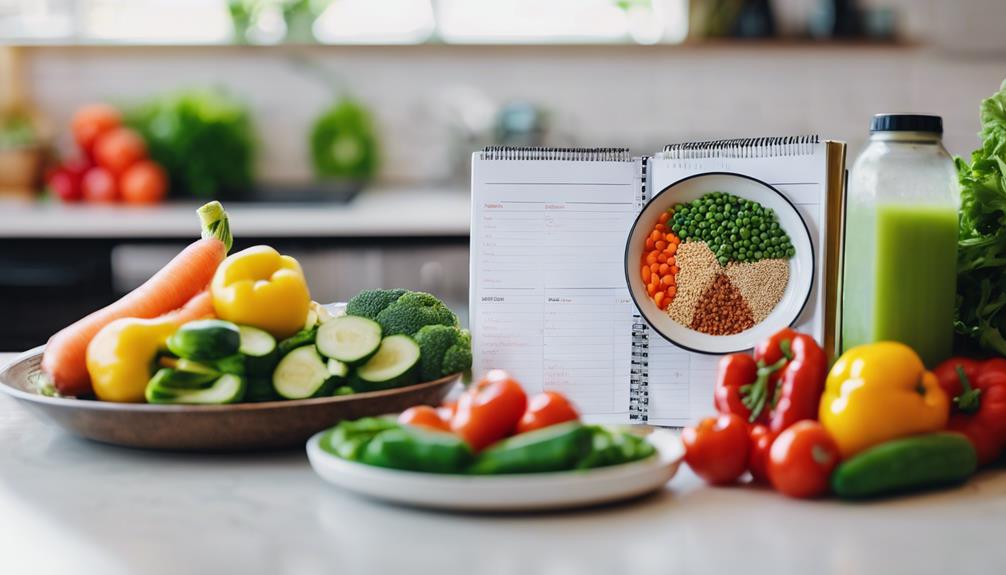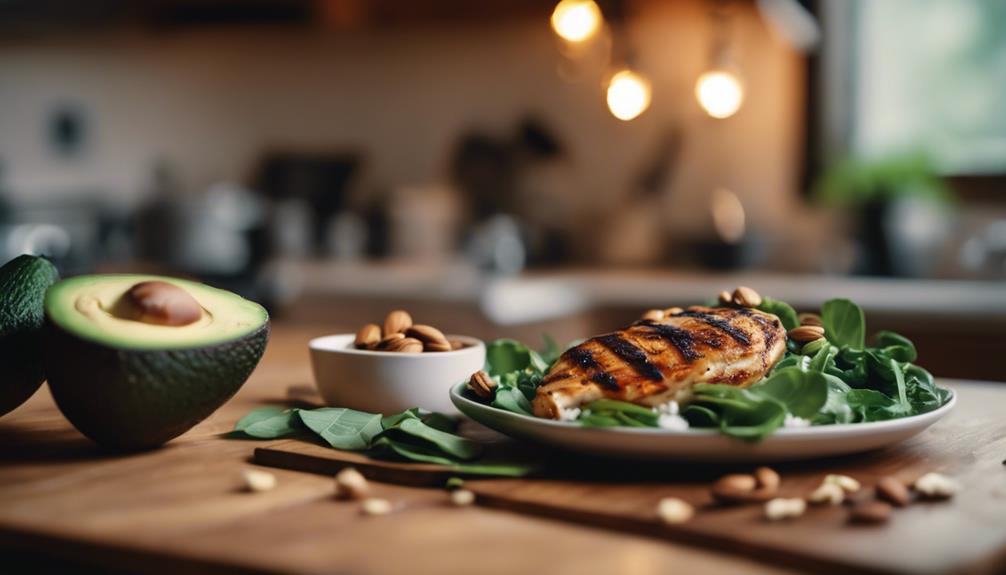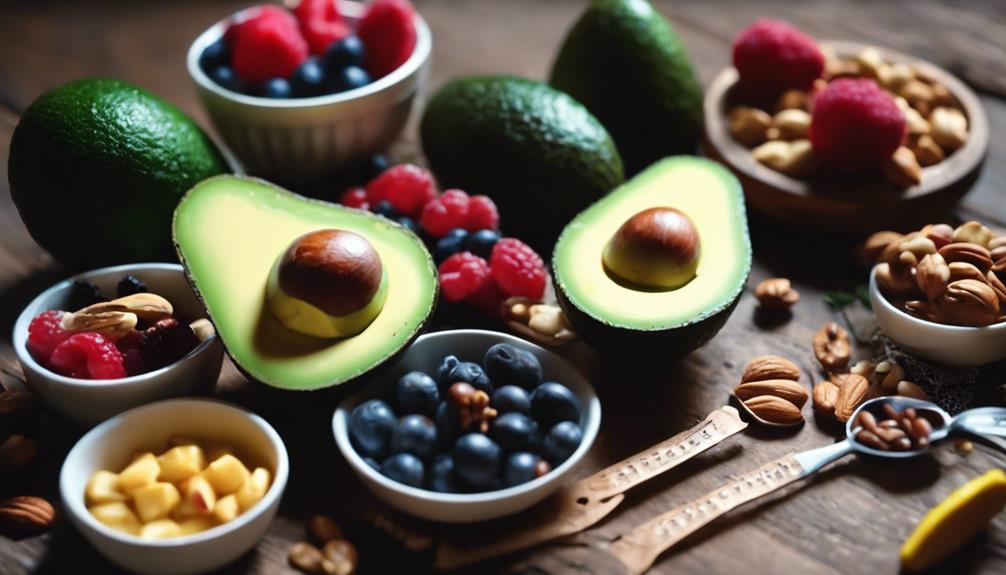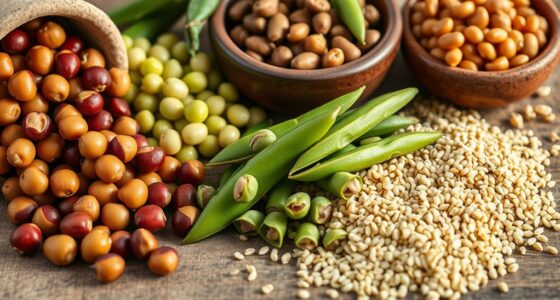You can lose weight quickly with the 7-Day Shred Meal Plan by focusing on a well-rounded diet and structured meal timing. This plan emphasizes high protein, healthy fats, and limited carbs to aid in fat loss while maintaining muscle. Starting with a 24-hour fast and following daily workouts designed to enhance fat burning is key. Don’t forget to drink plenty of water and prepare your meals ahead of time for convenience. Adjust your calorie intake based on your body weight for optimal results. Stay committed to this plan, and you will reach your fitness goals – keep going to learn how to increase your success!
Key Takeaways
- Follow a structured 7-day meal plan focusing on a balanced macronutrient distribution to optimize fat loss and muscle preservation.
- Incorporate low-intensity cardio on select days to boost fat burning while maintaining energy levels.
- Hydrate consistently with recommended water intake to support metabolism and overall performance.
- Prepare meals in advance to ensure access to healthy ingredients and avoid unhealthy choices.
Overview of the 7-Day Shred Meal Plan
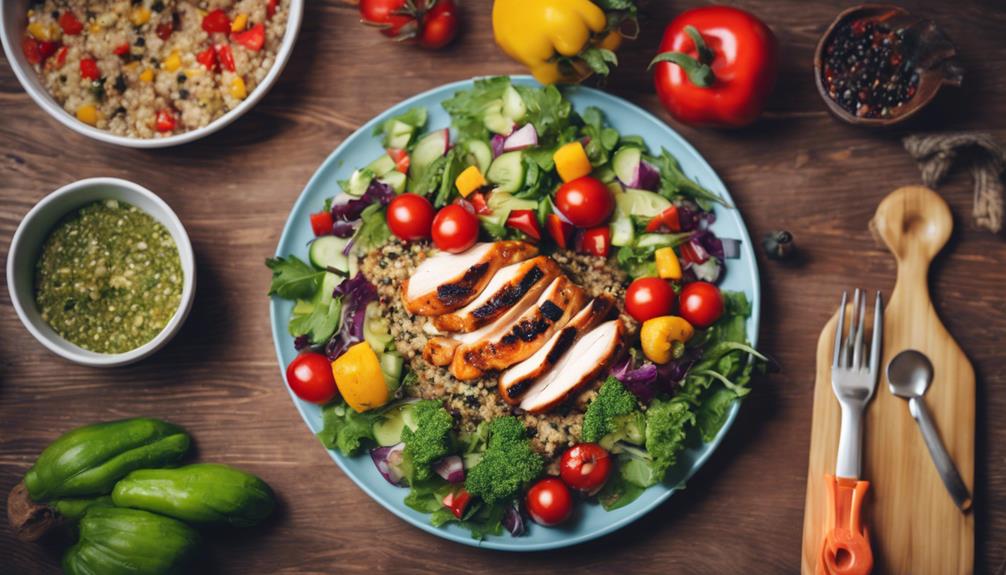
The 7-Day Shred Meal Plan offers a structured approach to enhance your physique for events like competitions or photoshoots. Designed primarily for bodybuilders and fitness enthusiasts, this plan focuses on improving aesthetics rather than promoting rapid weight loss.
You'll follow a carefully calculated calorie intake based on your body weight, guaranteeing you meet your energy needs while optimizing fat loss. During the week, you'll engage in meal prep to maintain consistency and adherence.
The plan emphasizes proper macronutrient distribution, encouraging you to prioritize protein and healthy fats while limiting carbohydrate intake to nutritious options like whole grains and sweet potatoes. Avoiding added sugars and alcohol is essential for achieving a hard, dry muscle appearance.
Hydration plays a critical role in the 7-Day Shred Meal Plan. You'll need to increase your water intake, especially during exercise, to support performance and recovery.
Daily Meal Breakdown
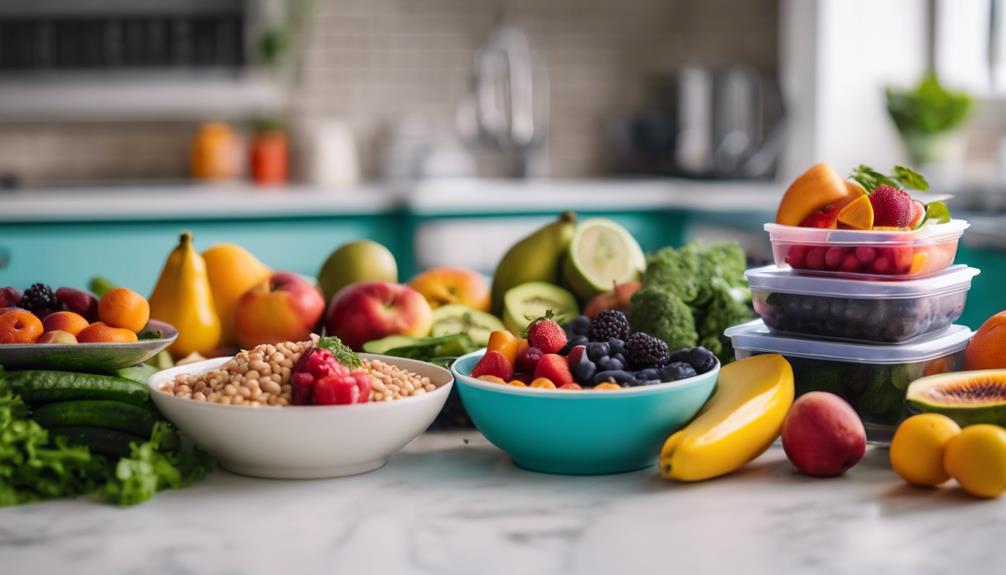
To make the most of your 7-Day Shred Meal Plan, understanding your daily caloric requirements is essential.
You'll want to align your meals with strategic timing to keep your energy levels stable throughout the day.
Let's break down how you can effectively manage your intake and optimize your meal schedule.
Daily Caloric Requirements
Calculating your daily caloric requirements is essential for effectively following the 7-Day Shred Meal Plan. This meal plan adjusts your daily calorie intake based on your body weight, targeting a range of BW x 8 to BW x 12. By creating a caloric deficit, you'll set the stage for significant weight loss and fat loss over the week.
On Day 1, you'll kick off with a 24-hour fast, focusing on hydration through water, black coffee, or tea. This approach jumpstarts your caloric deficit.
As you progress to Days 2 and 4, you'll engage in low-intensity cardio while adhering to your caloric targets, which not only promotes fat burning but also helps preserve muscle.
Day 5 shifts gears, featuring a high-volume workout followed by a carb-rich meal to replenish glycogen stores, vital for muscle recovery.
Throughout the week, maintain proper hydration and avoid simple sugars, ensuring your caloric intake aligns with the defined macronutrient breakdown.
This structured approach will help you maximize results as you shred those pounds effectively!
Meal Timing Strategies
Meal timing plays an essential role in optimizing your energy levels and supporting your weight loss goals during the 7-Day Shred Meal Plan. By focusing on frequent eating intervals, you'll maintain a balanced approach to nutrition that prevents excessive hunger and supports your metabolism.
Here's a daily breakdown to guide your meal timing strategies:
| Meal Type | Time | Focused Nutrients |
|---|---|---|
| Breakfast | 7:00 AM | 45% carbs, 30% protein, 25% fats |
| Morning Snack | 10:00 AM | Light protein and healthy fats |
| Lunch | 1:00 PM | Balanced macronutrient distribution |
| Afternoon Snack | 4:00 PM | Hydration and complex carbs |
| Dinner | 7:00 PM | Lean protein and veggies |
Tailor your daily caloric intake based on your body weight, using formulas like BW x 8 or BW x 10. Remember to keep hydration a priority throughout the day, as it supports overall health and aids in weight loss. With this structured meal timing, you're setting yourself up for success on your 7-Day Shred journey!
Meal Prep Strategies
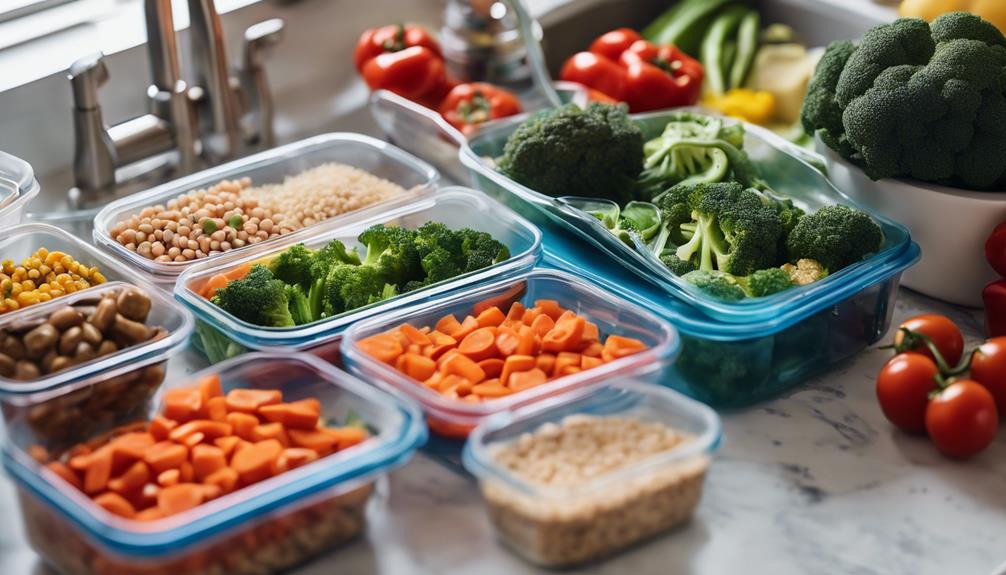
Efficient meal prep can make your week smoother and healthier, allowing you to enjoy nutritious meals without the last-minute stress. By implementing smart meal prep strategies, you can maintain a calorie deficit and reap significant health benefits.
Start by creating a shopping list that includes essential grains, vegetables, and proteins.
Prepare overnight oats the night before to guarantee quick and nutritious breakfasts for busy mornings. Also, grill chicken breasts in bulk and store them in airtight containers. This gives you easy access to lean protein throughout the week.
Cooking grains like couscous and brown rice in advance and portioning them out makes reheating a breeze during meal assembly.
Chop vegetables and fruits ahead of time to reduce prep time during the week. Store them in airtight containers to keep them fresh and ready to use.
You can also prep dishes like Chipotle-Lime Cauliflower Taco Bowls and hard-boiled eggs for additional variety.
With these meal prep strategies, you'll find it easier to stick to your meal plan and stay on track with your health goals, all while enjoying delicious, home-cooked meals.
Macronutrient Focus
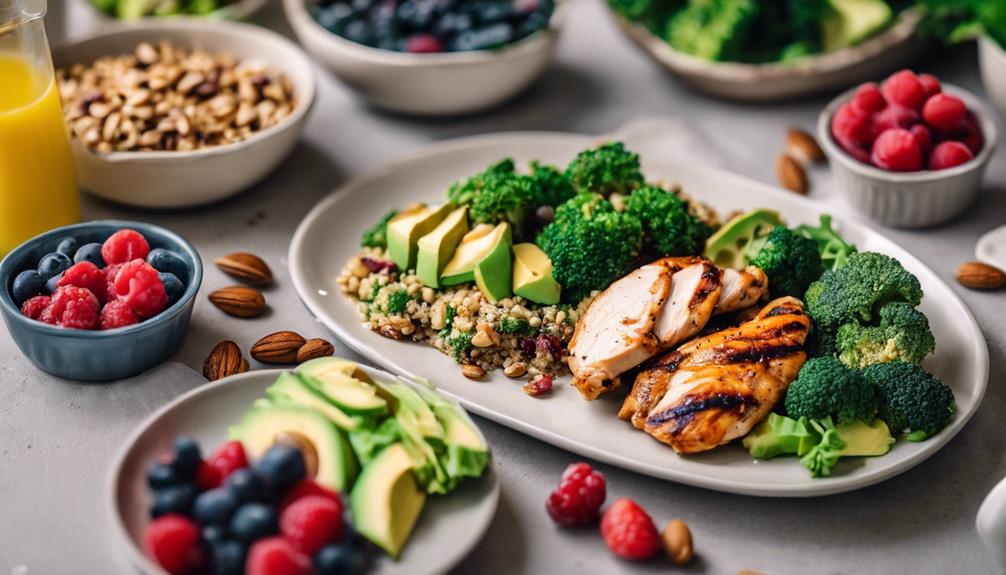
Balancing your macronutrients is key to maximizing the effectiveness of the 7-Day Shred Meal Plan while ensuring you lose fat and maintain muscle mass. The plan emphasizes a macronutrient distribution of 45% carbohydrates, 30% protein, and 25% healthy fats. This balance helps you achieve weight loss without sacrificing muscle mass.
For carbohydrates, focus on whole grains and starchy vegetables, avoiding added sugars that can lead to excess caloric intake.
Lean meats, fish, and plant-based proteins are essential for your protein intake, which supports muscle recovery and growth. You might also consider incorporating BCAAs or protein shakes tailored to your body weight for added support.
Healthy fats are integral to your diet as well, sourced from nuts, seeds, and avocados. These not only provide essential nutrients but also enhance satiety, helping you feel full longer.
Throughout the week, adjust your daily caloric intake based on your body weight, following specific guidelines to optimize fat loss while preserving your muscle mass. By adhering to these macronutrient guidelines, you'll set yourself up for success on your weight loss journey.
Tips for Success
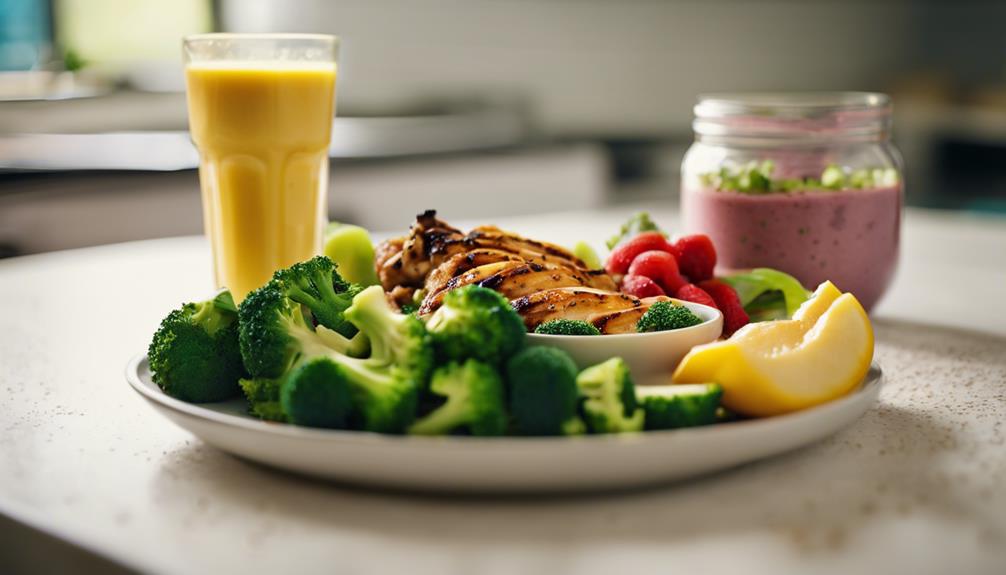
To stay on track with the 7-Day Shred Meal Plan, focus on setting achievable goals that keep you motivated and committed to your journey.
Start by determining how much weight you want to lose and break that down into smaller, manageable targets. This makes your diet feel less intimidating and more rewarding.
Make sure you're consuming enough calories per day to prevent hunger and cravings. Eating too little can lead to binge eating and derail your progress. Use the meal plan to guide your food choices while ensuring you're still satisfied.
Incorporating regular physical activity is vital. Aim for 4 to 5 days of exercise each week to enhance your weight loss results. This not only helps you burn calories but also improves your overall fitness.
Reward yourself for completing the meal plan with non-food items like clothing or spa visits. This reinforces positive behavior and keeps your motivation high.
Supplementation Insights
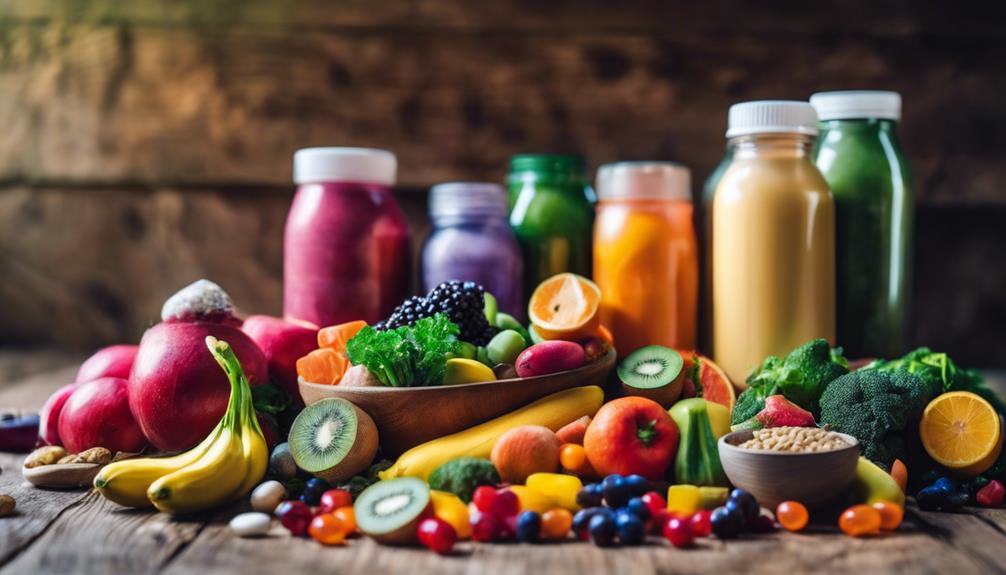
When considering supplementation for your 7-Day Shred, it's crucial to choose products that align with your weight loss goals and support your overall health.
Fat burners like LeanBean can help with appetite suppression and enhance fat metabolism, making it easier for you to stick to your diet plan. These supplements are particularly useful for increasing energy levels during workouts, which can improve your overall fat loss results.
Incorporating protein shakes and BCAAs (Branched-Chain Amino Acids) into your routine can further support muscle preservation while you're cutting calories. Be mindful of your intake limits based on your body weight to maximize benefits without overdoing it. Remember, supplementation should never replace a balanced diet; instead, think of it as an aid to complement your nutrition and exercise program.
Always purchase supplements through official channels to guarantee authenticity and effectiveness. By strategically selecting the right supplements, you'll create a strong support system for your weight loss journey.
Stick to your 7-Day Shred meal plan, and let these tools help you reach your goals effectively.
Additional Resources and Articles
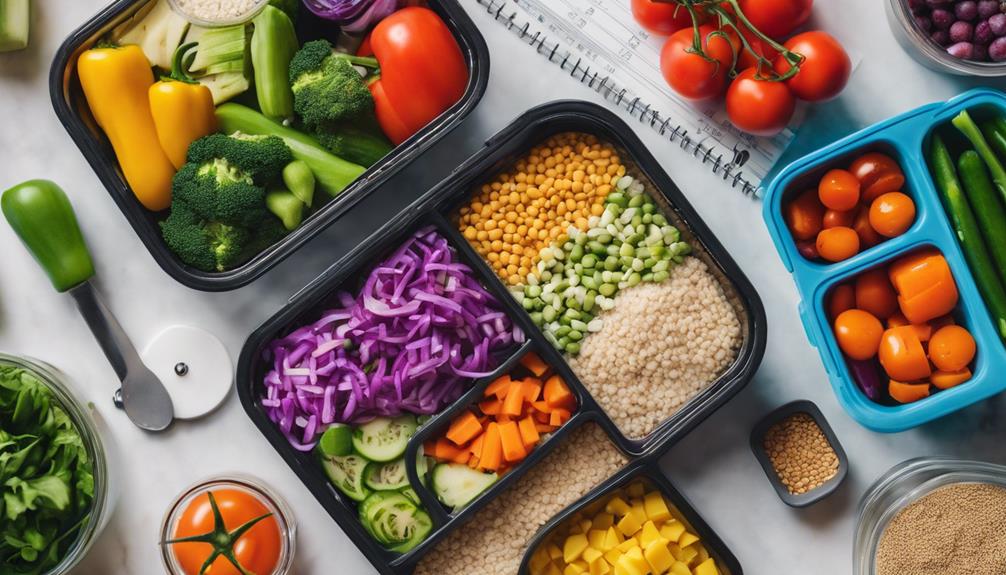
To achieve sustainable weight loss, you'll want to explore various strategies beyond just meal planning.
Finding tips on effective meal preparation can make your journey easier and more enjoyable.
Sustainable Weight Loss Strategies
Sustainable weight loss strategies focus on making gradual lifestyle changes that lead to lasting results without the frustration of extreme diets. To achieve this, aim for a calorie deficit of 500 to 600 calories per day. Incorporate regular physical activity, like 150 minutes of moderate-intensity exercise each week, to enhance your weight loss efforts and improve overall health.
Setting realistic weight-loss goals is essential; targeting 1 to 2 pounds per week keeps you motivated and reduces potential burnout. Prioritize balanced nutrition by focusing on whole foods rich in high protein and high fiber. These foods not only promote satiety but also help prevent nutrient deficiencies.
Don't forget to stay hydrated! Drinking adequate water—around 9 cups for women and 13 cups for men daily—supports your weight loss journey and overall well-being.
Meal Planning Tips
Effective meal planning makes your 7-Day Shred journey easier and more enjoyable, guaranteeing you stay on track with your goals. To enhance your efforts, consider the following tips:
| Meal Prep Tips | Benefits |
|---|---|
| Create a shopping list | Saves time and guarantees you have all healthy ingredients on hand. |
| Prep overnight oats | Provides a quick, nutritious breakfast to kickstart your day. |
| Grill chicken in advance | Allows for quick meal assembly throughout the week. |
| Stay hydrated | Aim for 9 cups (women) or 13 cups (men) of fluids daily for peak health. |
| Use weight-loss apps | Helps track progress and offers personalised content for motivation. |
Frequently Asked Questions
What Food to Eat to Lose Weight in 7 Days?
To lose weight in seven days, think of your plate as a colorful garden. Fill it with lean proteins, whole grains, and vibrant veggies, while keeping healthy fats in check and staying hydrated throughout the day.
How Can I Lose Weight in 7 Days Fast?
To lose weight in seven days, create a caloric deficit, focus on high-protein and fiber-rich foods, stay active with cardio and strength training, drink plenty of water, and prep meals to avoid unhealthy choices.
What to Eat to Lose Belly Fat in 1 Week?
To lose belly fat in one week, focus on lean proteins, fiber-rich veggies, and whole grains. Stay hydrated and maintain a calorie deficit. Pair these with regular exercise to maximize your results and boost metabolism.
What Is the Shred Diet Plan?
Imagine sculpting your body like a masterpiece. The Shred Diet Plan's a week-long journey, blending targeted nutrition and intense workouts, tailored to boost your aesthetics and fat loss for those special occasions or competitions.
Can the 7 Day Shred Meal Plan be Modified for a Low Carb or Keto Diet?
Yes, the 7 Day Shred Meal Plan can definitely be modified for a low carb or keto diet. By incorporating the best low carb fast food options into the plan, such as grilled chicken salads or lettuce wrap burgers, you can ensure that you are sticking to your dietary goals while still following the meal plan.
Conclusion
As you wrap up your week on the 7-Day Shred Meal Plan, remember that your journey is like a marathon, not a sprint.
By sticking to this plan, you're setting the stage for lasting change, not just quick fixes.
Embrace the energy and results you've gained, and carry them forward.
Keep pushing yourself, stay committed, and you'll find that shedding pounds isn't just achievable—it can be a rewarding experience that transforms your lifestyle!

